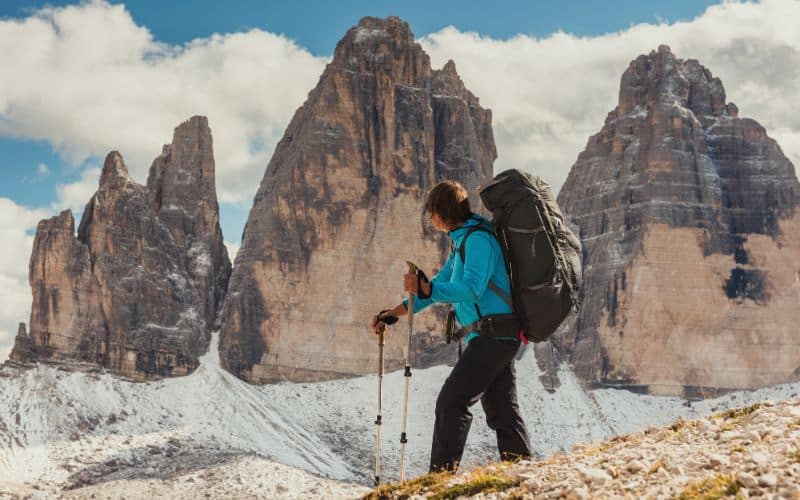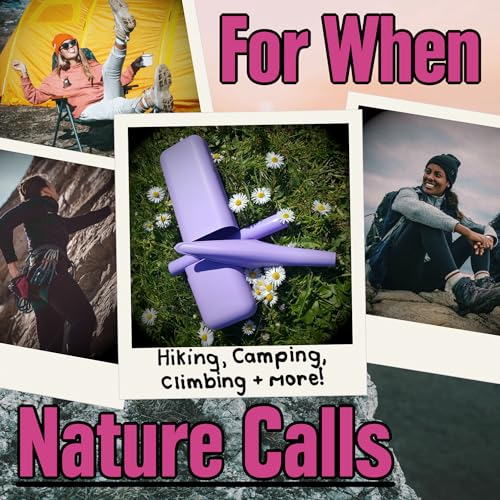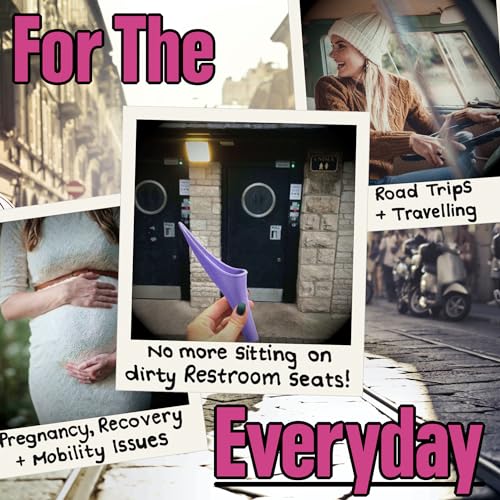There is something about walking into the woods with everything you need on your back. Backpacking can take you to amazing places and allow you to test your limits and push yourself.
Alas, backpacking is a little different for women than it is for men, in particular when it comes to trip planning, trail safety, and the must-have gear items. But don’t let that put you off!
In this guide, we share 25 tips for women’s outdoor adventures. We’ve included ways to keep yourself safe, places to avoid, and helpful tips on what to bring.
Table of Contents
- 1. Find Friends for Your Backpacking Adventure
- 2. Choose the Perfect Backpacking Destination
- 3. Prepare Yourself Physically
- 4. Prepare Yourself Mentally
- 5. Take a First Aid Course (and Pack a First Aid Kit!)
- 6. Know How to Use a Map and Compass
- 7. Bring a Satellite Phone or Two-Way GPS
- 8. Share Your Plans With Someone You Trust
- 9. Otherwise, Keep Plans to Yourself
- 10. Pack the Ten Essentials
- 11. Bring Bear Deterrent Spray
- 12. Do Your Research
- 13. Avoid Camping Near Hunting Areas
- 14. Trust Your Gut!
- 15. Backpacking on Your Period
- 16. Bring a FUD in Your Backcountry Hygiene Kit
- 17. Bring a Pee Rag Instead of Toilet Paper
- 18. Pack a Trowel
- 19. Leave No Trace
- 20. Bring Trekking Poles
- 21. Boots or Shoes?
- 22. Sleep System: Pillow, Sleeping Bag, and Sleeping Pad
- 23. What Size Backpack?
- 24. Bring a Safety Whistle
- 25. Bring Quick-Dry Underwear
- Women Backpacking Tips!
1. Find Friends for Your Backpacking Adventure
Solo backpacking can be rewarding, but if safety is a concern, going with a friend (or two) can alleviate the risk. Especially your first few times out, going with another person can make everything easier.
A bonus is that backpacking together is a powerful way to strengthen friendships and bonds. Facebook is a great place to find backpacking buddies. You can also do a web search for ‘backpacking groups near me’ or ‘backpacking clubs + your city/town.’ If you are meeting new people to backpack with we suggest going on a couple of day hikes with them first!
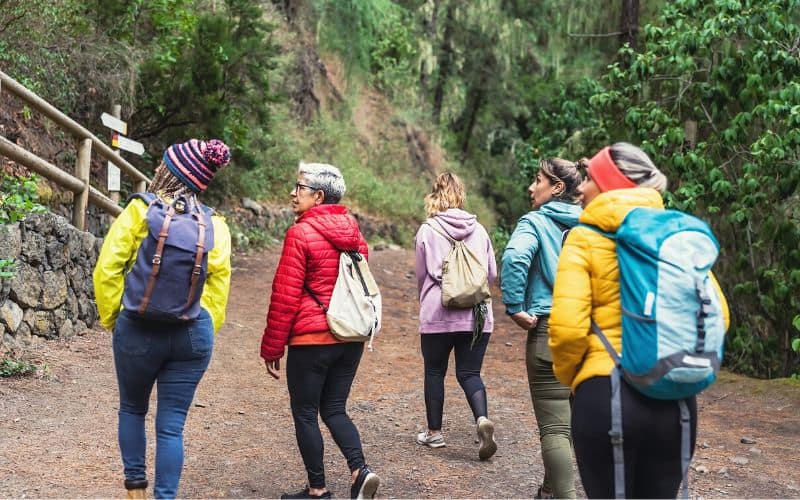
2. Choose the Perfect Backpacking Destination
Backpacking is much more enjoyable when you go somewhere you’re excited about. Finding such a place depends on your ability and comfort levels. For example, beginners should avoid remote trails. Here are a few more things to consider when choosing a backpacking destination:
- Popularity – More popular trails are better maintained, marked, and easier to follow than lesser-known spots. You’re also more likely to find help, if needed, on a busier trail.
- Phone service – First-time backpackers might feel more comfortable in a spot with phone service.
- Campsites – When researching a backpacking location, investigate the campsite location. Campsites miles down or right next to the trail are less than ideal. You will feel safer closer to the trailhead but further from the path.
- Day of the week – Weekends will be busier than weekdays. There is safety in numbers. Join the weekend warriors for more support.
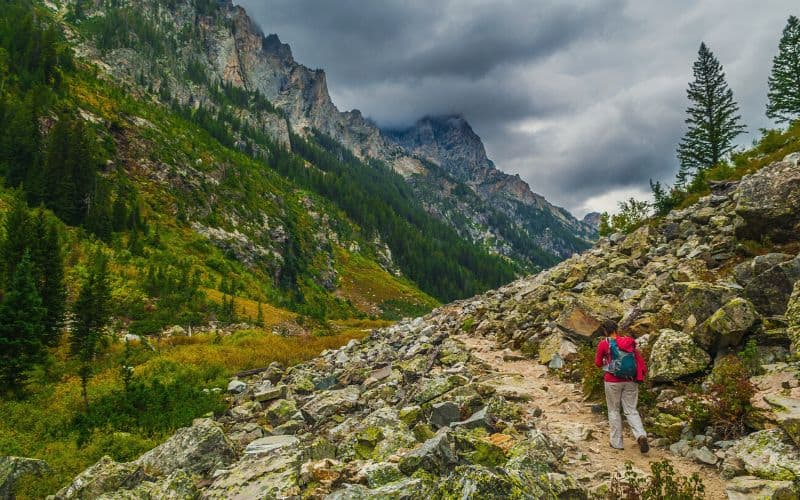
3. Prepare Yourself Physically
Backpacking is physically demanding. Even seasoned backpackers train in the off-season and prepare before their first trip of the year. And so should you! Start with short day hikes and work up to all-day excursions, followed by a short-distance one-night trip. Check out the following ways to help ensure you are prepared physically for the rigors of backpacking:
- Cardio – Backpacking and hiking require a strong heart. Train your heart and lungs with cardio. This can include walking, jogging, and bicycling. If weather conditions force you inside, use the stair climber, rowing machine, or elliptical. You can even dance, roller skate, or play pick-up basketball. Whatever it takes to get your heart pumping.
- Strength – Carrying your overnight gear means you need to focus on strength training as well. As you can imagine, backpacking takes a lot of lower-body and core strength. Try squats, lunges, step-ups, calf raises, and planks to train your hiking muscles. Start with body weight and add weight as you go. Also going on a few day hikes carrying all your backpacking gear will get you used to the weight before you begin a multi-day trek!
- Stretching – It’s hard to overemphasize the importance of stretching. Flexibility will make you less injury-prone and improve recovery times between workouts. You don’t have to do crazy sauna yoga to benefit from stretching. Find a routine that works for you and stick to it.
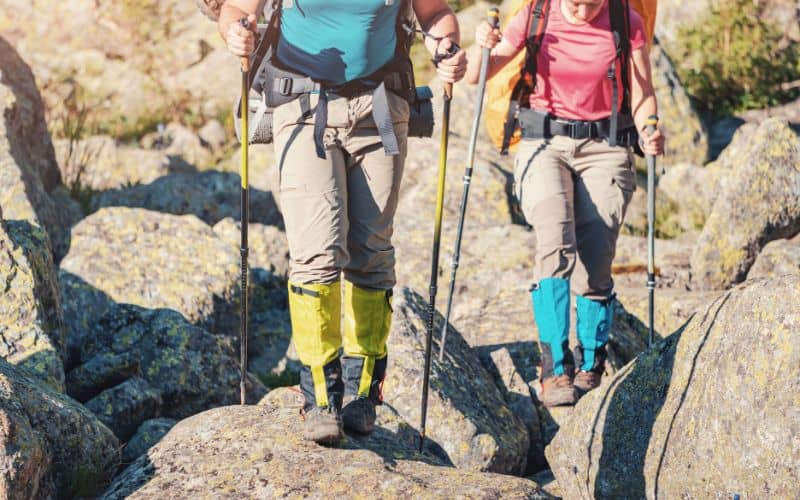
4. Prepare Yourself Mentally
Mental preparation is as necessary as the physical side. You won’t have a good experience if you’re anxious, jumpy, or second-guessing every decision. Same as you would with physical strength, work up to your first backpacking trip. Go car camping first, or pitch your tent in your backyard.
This will also help you dial in your gear and avoid forgetting anything important. Another good way to be mentally prepared is to know where you’re headed. Eliminate surprises by planning ahead.
5. Take a First Aid Course (and Pack a First Aid Kit!)
Having first aid knowledge will give you confidence and peace of mind on the trail. Not only that, but it will also make you a desirable trail buddy. There are a variety of first aid classes available, ranging from basic to wilderness specific.
And don’t forget to bring your first aid kit! You can build your own kit or buy pre-made kits. If you opt for a pre-made kit, know what’s in it before you hit the trail.
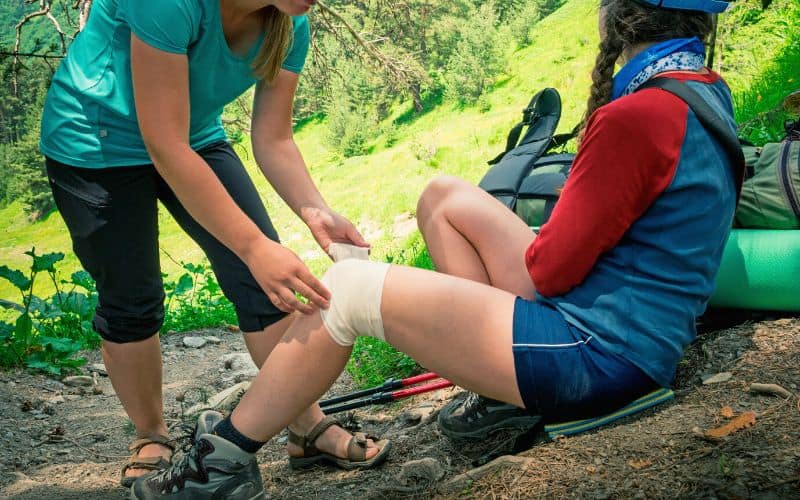
6. Know How to Use a Map and Compass
A map and compass sound like outdated things to carry. However, relying on your cell phone can lead to trouble. The phone could die, get wet, get lost, or break along the trail. On the other hand, a map and compass will work no matter the conditions.
The good news is, using a map and compass is straightforward and easy to learn.
7. Bring a Satellite Phone or Two-Way GPS
In isolated or remote areas, you may not have a cell phone signal. Satellite phones or two-way GPSs don’t rely on cell phone towers, so no matter where you are, you can keep in touch with the rest of the world.
A two-way GPS like the Garmin inReach allows you to text back and forth with a pre-determined contact no matter where you are. If these options are outside your budget, a personal locator beacon can alert authorities of your location in an emergency, but without the ability to communicate back and forth.
Anytime you head out for an outdoor adventure, even just a day hike, you should let someone know where you’re going and when you plan to be back. You never know what might happen on the trail; if no one knows where you are, there won’t be anyone to initiate a search and rescue response.
Share your plans with a trusted friend, partner, or parent. Be specific about where you’re going, how many miles you’re hiking, and where you’ll spend the night. For when you should be back, be less specific. Give an approximate return time, so you have some wiggle room before anyone starts worrying.
9. Otherwise, Keep Plans to Yourself
Beyond a trusted confidant, don’t broadcast your plans. The fewer people who know where you are sleeping, the better. When it comes to other hikers and backpackers, you don’t have to answer any questions about where you plan to camp or who you are with.
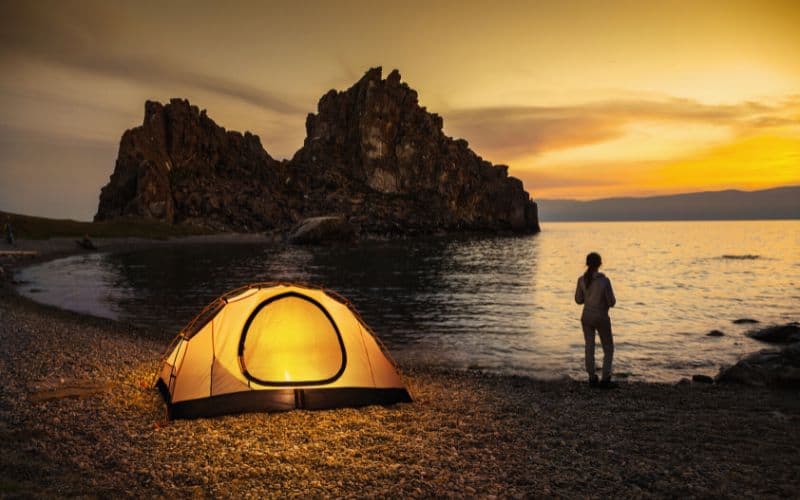
10. Pack the Ten Essentials
Whether you plan on roaming national parks or tackling the AT, certain gear items should be non-negotiable. Luckily, a list of such items has existed for years in the form of the Ten Essentials for Hiking and Backpacking.
All you need to do is customize the list to align with your ideal pack weight and preferences, remembering to make allowances for the weather and the terrain in your backpacking or camping destination.
11. Bring Bear Deterrent Spray
Bear deterrent spray is a must-have even when you’re not in bear territory. If your fear of other backpackers (male backpackers) is keeping you from hitting the trails, bear spray is a great self-defense tool.
Carry bear deterrent spray with your backpacking gear in an easy-to-reach spot, and know how to use it.
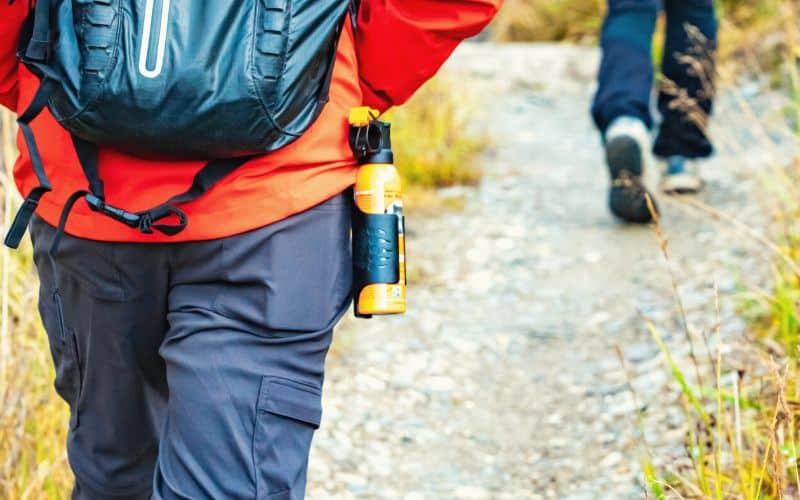
12. Do Your Research
The more you can learn about an area, the better. The list of things you can research before you go on a backpacking trip is endless.
Here are a few of the most important things to know before you go:
- Weather forecast
- Water availability
- Route and time estimates
- Campsite availability
- Food storage regulations
- Wildlife and insects
- Terrain, including elevation changes, vegetation, and trail quality
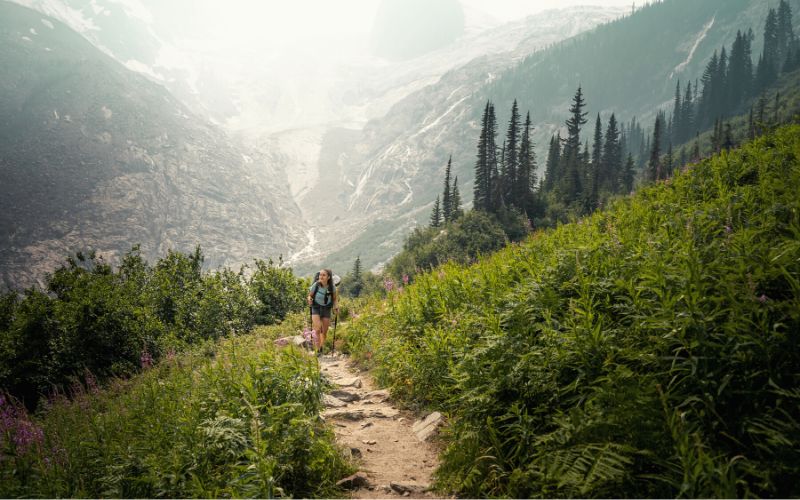
13. Avoid Camping Near Hunting Areas
This is good advice for all backpackers. While we’re all trying to enjoy the outdoors, hunters and backpackers don’t necessarily mix. Luckily, there are plenty of areas for backpacking that don’t overlap with hunting grounds, so you don’t have to worry about scaring off a hunter’s prey or accidentally getting shot on a game trail.
14. Trust Your Gut!
Listen to your instinct when you’re on the trail. If something feels wrong, it probably is! You can always hike back to your car and leave in scary or uncomfortable situations. If someone or something makes you uneasy, trust that feeling and remove yourself. You’re not overreacting; you’re being safe, and as the saying goes, better safe than sorry.
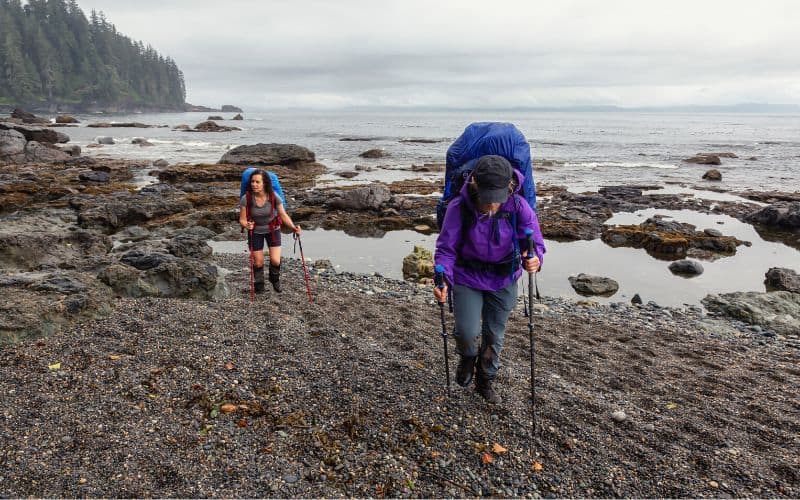
15. Backpacking on Your Period
Women who menstruate know what a nuisance it is, especially in the outdoors. But don’t worry, backpacking during your period is more than possible, especially when you know how to manage it. Hopefully, you won’t be blindsided and will be able to come prepared. Each method comes with its advantages and challenges.
- Tampons – Tampons are a go-to for many women backpackers. They are relatively mess-free, lightweight, and comfortable for hiking. The disadvantage is that you have to pack everything out, including used tampons and applicators. This adds weight to your pack.
- Pads – Pads are not that comfortable for the trail. They’re bulky and can make you sweaty as you hike. Pads also have to be packed out.
- Discs or cups – Some women swear by the menstrual cup. They can be worn for up to 12 hours, meaning you won’t have to worry about changing anything until you get to camp. Discs and cups also eliminate waste, so there’s nothing to pack out! The challenge with this method is figuring out where to put the blood. Same as other human waste; you have to bury it.
- Period underwear – Period underwear is another option for backpacking on your period. Some people find these period products uncomfortable to hike in, but they can be a good backup, especially on lighter days.
Whatever your preferred blood-capturing method, a hygiene kit with your backpacking gear will help keep you clean and fresh. Put the following in your kit:
- Backpacking toilet paper
- Ziploc trash bag for packing out used products and TP
- Hand sanitizer and biodegradable hand soap
- Sanitizing/baby wipes
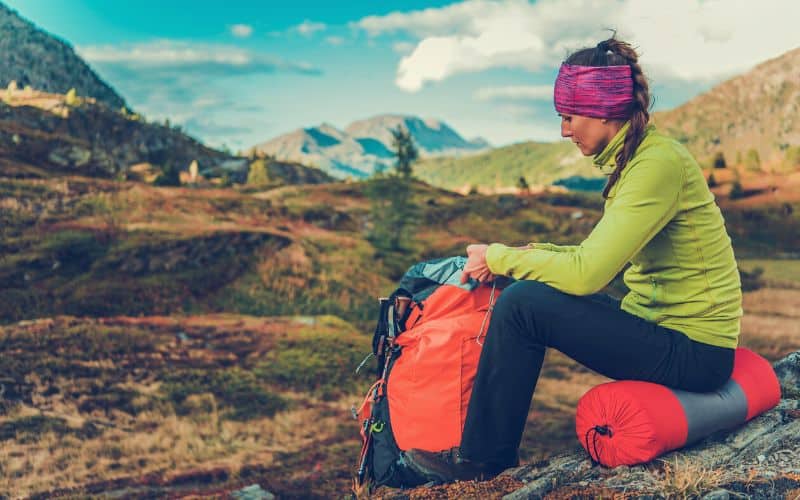
16. Bring a FUD in Your Backcountry Hygiene Kit
A FUD, or Female Urination Device, is a funnel designed to allow women to pee standing up. They can be a lifesaver in the backcountry. With a FUD, you can pee without taking your pants down or use it to pee in a bottle and avoid getting out of your tent at night.
There are lots of different models out there. Whichever one you end up using, try it at home first and make sure you know how to avoid overflow or leaks.
17. Bring a Pee Rag Instead of Toilet Paper
Toilet paper quickly takes up precious space in your backpack. A pee rag is a good lightweight alternative. You can make your own with a micro towel or a bandana. There are also pee rags on the market with a convenient hanging strap, so you can keep it on the outside of your backpack and let UV rays sanitize the rag while you walk.
18. Pack a Trowel
Leave No Trace requires that human waste is buried 6-8 inches deep, at least 200 feet from water. Digging these so-called ‘catholes’ is a lot easier with a backpacking trowel. We’re not talking about a heavy gardening trowel but a backpacking-specific, lightweight trowel.
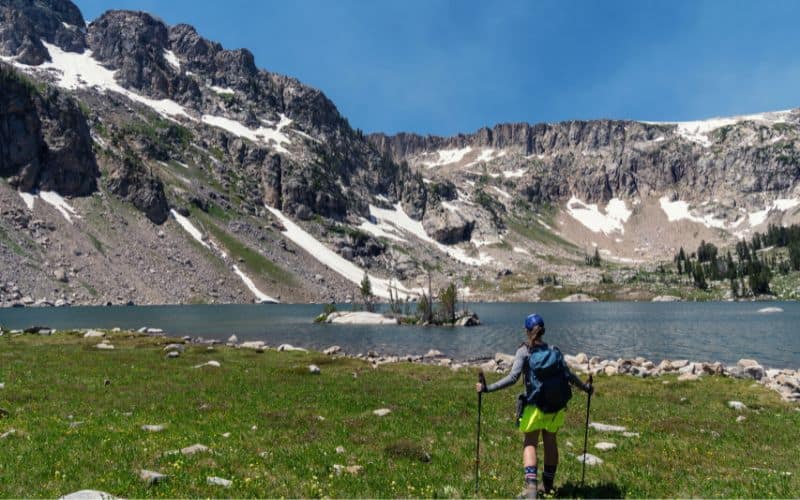
19. Leave No Trace
Speaking of Leave No Trace or LNT, all backpackers, regardless of gender, should follow the seven principles of Leave No Trace. This includes:
- Plan Ahead and Prepare
- Travel and Camp on Durable Surfaces
- Dispose of Waste Properly
- Leave What You Find
- Minimize Campfire Impacts
- Respect Wildlife
- Be Considerate of Other Visitors
20. Bring Trekking Poles
Trekking poles can be the difference between feeling powerful and ready to go or sore and tired. Using poles helps reduce strain and impact on your lower body. In other words, your knees will thank you!
Likewise, if your trail involves stream crossings or steep downhills, poles offer another two points of contact to ensure you make it safely where you’re going. And trekking poles can double as tent poles, tarp holders, or medical splints.
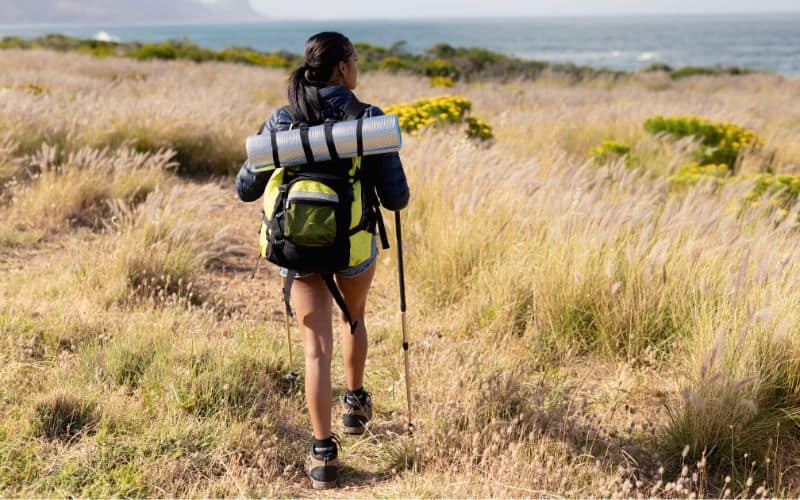
21. Boots or Shoes?
The age-old debate among hikers and backpackers: boots or shoes. Unfortunately, there is no one answer. Whether you wear hiking boots or lightweight hiking shoes depends on several things, including:
- Terrain – The more rugged the trail, the more you will need the support of a boot. For steep ridges and rock scrambles, opt for something a little beefier. But, on graded, level trails, a shoe will suffice.
- Trail conditions – Shoes are best for dry conditions. On snowy, wet, or muddy trails, a waterproof hiking boot will keep your feet and ankles warm and dry.
- Pace – One significant disadvantage to boots is their weight. Hikers trying to keep a fast pace and cover many miles a day prefer something lighter, like a shoe.
- Experience – Wearing a backpack changes your center of mass and requires you to balance in a different way. Inexperienced women backpackers can benefit from the stability of a bigger hiking boot. As you gain experience, you can transition to a lighter hiking or running shoe.
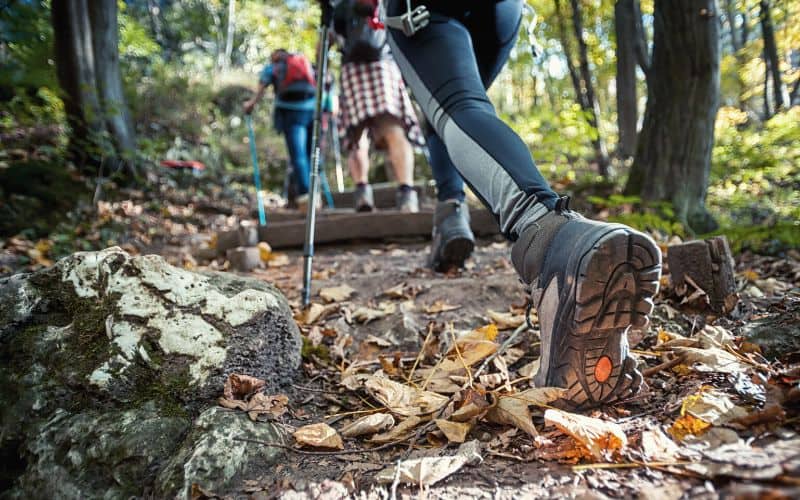
22. Sleep System: Pillow, Sleeping Bag, and Sleeping Pad
Sleep system refers to your pillow, sleeping bag, and pad and how well the components work together. Putting together the perfect sleep system for your needs takes time and trial and error. It can be hard to know where to begin. Use these general rules to get started:
- Go low – Choose a bag with a temperature rating lower than the lowest temperature forecast. You can always cool down at night, but warming back up is difficult.
- A sleeping pad is a must – A camp pad insulates you from the cold ground and is a must-have even on summer trips. Sleeping bag temperature ratings depend on sleeping pad use. Sleeping bags are useless if you don’t have a pad.
- Clothes – Pajamas are part of your sleep system. Bring some sort of clothes that are just for sleeping. We recommend a thermal top and long johns for most conditions.
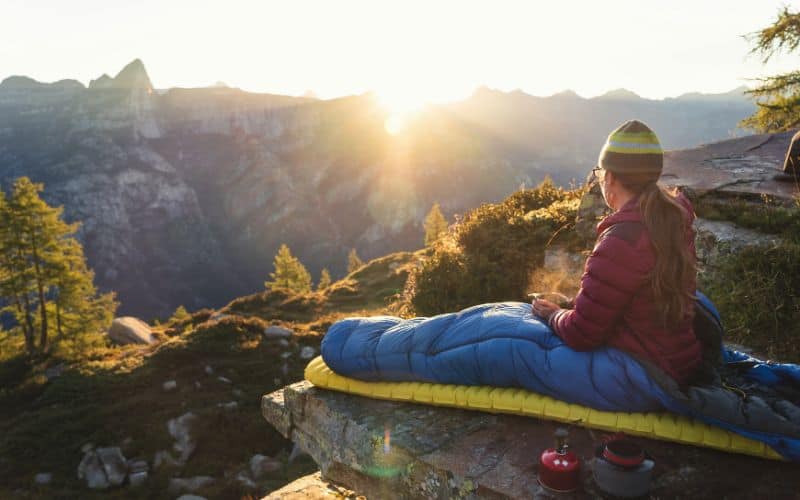
23. What Size Backpack?
Similar to hiking boots versus shoes, backpack size depends on a number of factors. The most important thing to consider is trip length. For example:
- 1-3 nights: 30-50 liters – For a one-night or quick weekend trip, 30-50 liter backpacking backpacks offer adequate space for your gear, food, and other supplies.
- 3-5 nights: 50-80 liters – A mid-sized pack in the 50-80 liter range is the best option for most hikers and backpackers. It will accommodate gear for a 3-5 night trip and works for shorter trips. If you have your packing list dialed, this size backpack can also work for longer trips.
- 5+ nights: 70 liters or more – 70+ liter backpacks are made for longer treks or winter adventures. They have plenty of space for more supplies or warmer sleeping bags (women sleep colder, so this is never a bad shout!).
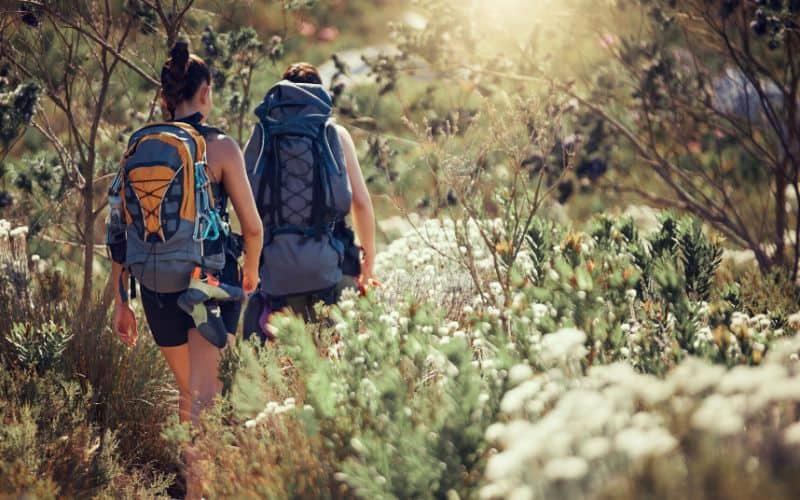
24. Bring a Safety Whistle
A safety or emergency whistle is another item all backpackers, hikers, and outdoor enthusiasts should carry. A whistle is up to three times louder than a voice and can alert others of an emergency.
To do this, blow three short blasts on the whistle, and pause a few seconds before blowing three blasts again. Whistles are also useful for scaring away predators and wildlife and getting other trail users’ attention.
25. Bring Quick-Dry Underwear
The saying “Cotton kills” extends to underwear. Avoid cotton underwear because it won’t dry out once damp and just makes you cold and uncomfortable. Instead, use synthetic, polyester, or wool blend underwear that will wick moisture and dry quickly.
Quick drying is also preferred when you need to wash your underwear but don’t want to wait hours for it to dry.
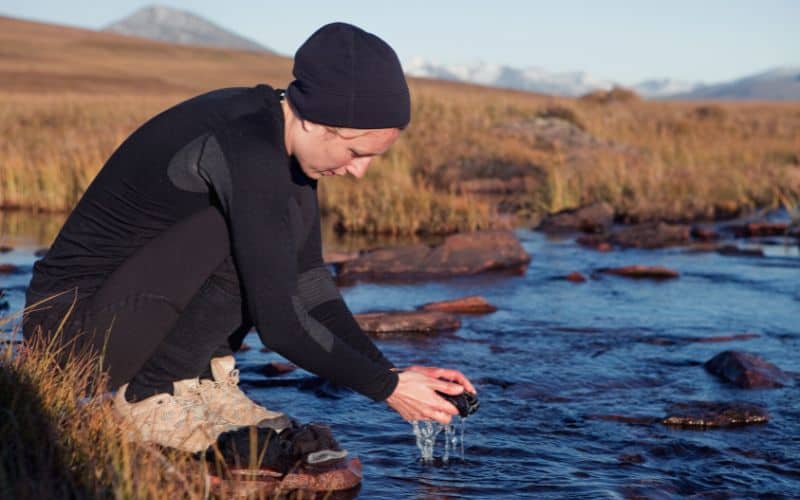
Women Backpacking Tips!
There is a lot that goes into planning and executing a backpacking trip. Of course, it is worth it! Backpacking is a rewarding way to get exercise and spend time in nature. There is nothing like the feeling of returning your car after a successful trip.
We hope this guide gives women backpacking know-how and the courage to hit the trail for their first backpacking trip. We wish you nothing but great experiences.
If you have questions, please drop them in the comments below, and don’t forget to share them with your backpacking buddies.
